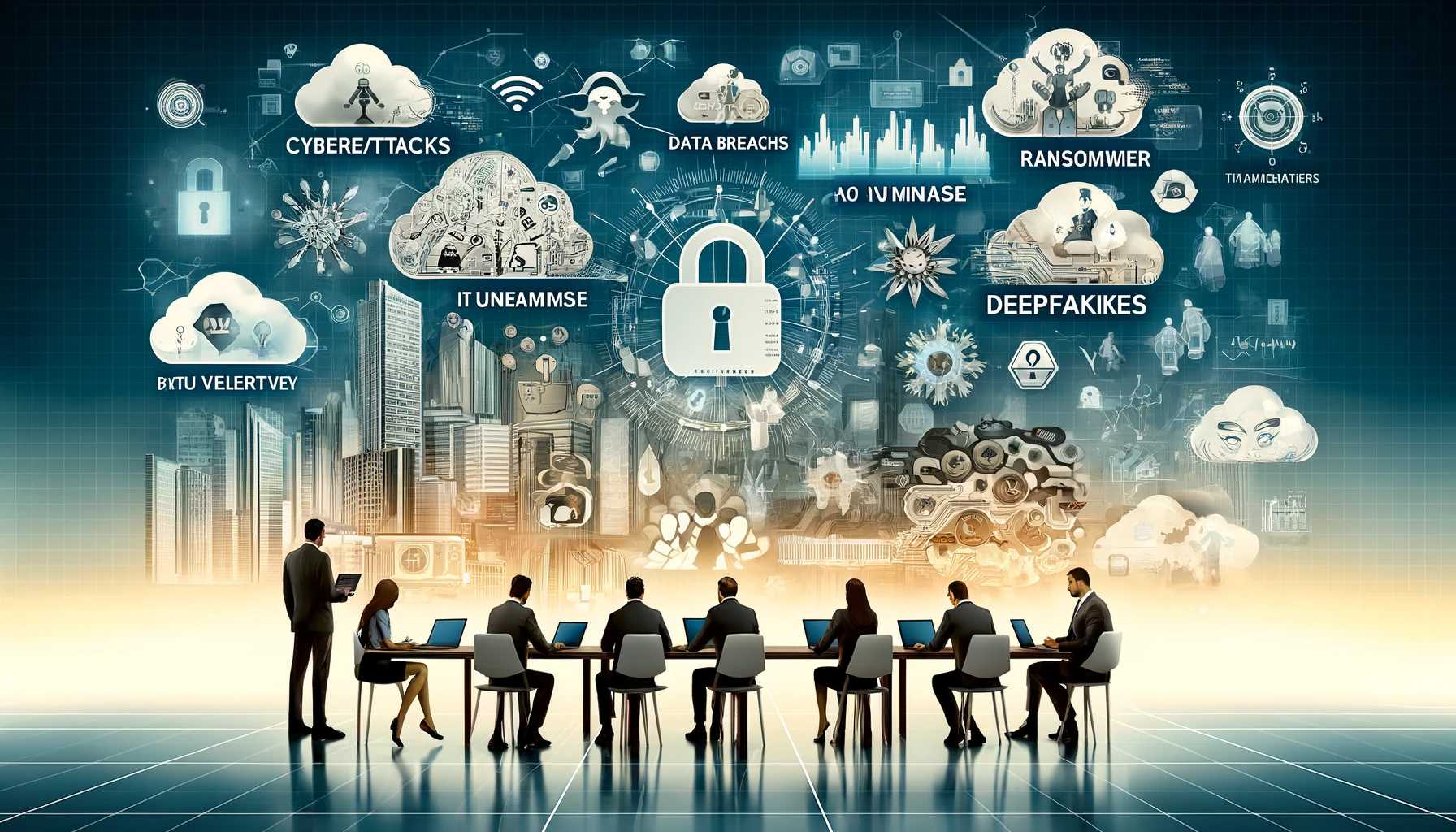Tech: The Seven Most Dangerous New Threats You Need to Know About
Hey there, tech enthusiasts and digital citizens! As technology
evolves and advances, so too do the threats and risks that come with it. From
cybersecurity vulnerabilities to privacy concerns, the tech landscape is rife
with dangers that can pose serious risks to individuals, businesses, and
society as a whole. In this blog post, we'll explore seven of the most
dangerous new threats in the tech world that you need to be aware of.
1. Ransomware Attacks: Holding Data Hostage
Ransomware attacks have
become increasingly prevalent and sophisticated in recent years, posing a
significant threat to individuals, businesses, and government organizations
alike. In a ransomware attack, malicious actors use malware to encrypt a
victim's data and demand a ransom in exchange for the decryption key. These
attacks can cause widespread disruption, financial loss, and data breaches,
making them one of the most dangerous threats in the tech world today.
Prevention and Mitigation: To protect against ransomware
attacks, it's essential to maintain up-to-date cybersecurity measures,
including robust antivirus software, regular data backups, and employee
training on phishing awareness and security best practices.
2. Deepfake Technology: Manipulating Reality
Deepfake technology has
emerged as a powerful tool for creating realistic but fake audio, video, and
images, often for malicious purposes. Deepfakes can be used to create
convincing fake news, spread disinformation, impersonate individuals, and even
manipulate elections. As deepfake technology becomes more accessible and
sophisticated, the potential for widespread misinformation and social
manipulation poses a significant threat to trust, credibility, and democracy.
Detection and Countermeasures: Combatting deepfake technology
requires a multi-faceted approach, including the development of advanced
detection algorithms, media literacy education for the public, and regulatory
measures to hold creators and disseminators of deepfakes accountable.
3. IoT Botnets: Weaponizing Connected Devices
The proliferation of Internet
of Things (IoT) devices has created a vast attack surface for cybercriminals to
exploit. IoT botnets, in particular, have emerged as a major threat, with
malicious actors leveraging compromised IoT devices to launch large-scale
distributed denial-of-service (DDoS) attacks, mine cryptocurrency, and carry
out other nefarious activities. The interconnected nature of IoT devices makes
them vulnerable to exploitation, posing significant risks to network security
and privacy.
Securing IoT Devices: To mitigate the threat of IoT botnets,
it's crucial to implement strong security measures for IoT devices, including
regular firmware updates, strong authentication mechanisms, and network
segmentation to isolate vulnerable devices from critical systems.
4. AI-Powered Cyberattacks: Automated Threats
Artificial intelligence (AI)
and machine learning (ML) have revolutionized cybersecurity, enabling both
defenders and attackers to automate and scale their operations. AI-powered
cyberattacks leverage sophisticated algorithms to bypass traditional security
measures, identify vulnerabilities, and launch targeted attacks with
unprecedented speed and precision. From phishing emails to malware detection
evasion, AI-driven cyberattacks represent a significant challenge for
cybersecurity professionals.
AI-Driven Defense: To combat AI-powered cyberattacks,
organizations must invest in AI-driven defense solutions that can detect and
respond to threats in real time, leveraging advanced analytics and machine
learning algorithms to stay one step ahead of cybercriminals.
5. Supply Chain Attacks: Targeting Vulnerabilities
Supply chain attacks involve
targeting third-party vendors and suppliers to infiltrate the systems of their
customers and clients. These attacks can take many forms, including software
supply chain attacks, hardware tampering, and supply chain compromise through
malicious insiders. By exploiting vulnerabilities in the supply chain,
attackers can gain unauthorized access to sensitive data, disrupt critical
infrastructure, and compromise the integrity of products and services.
Securing the Supply Chain: Protecting against supply chain
attacks requires robust security measures at every stage of the supply chain,
including vendor risk assessments, supply chain transparency, and continuous
monitoring and auditing of third-party suppliers.
6. Quantum Computing Threats: Breaking Encryption
While quantum computing holds
the promise of revolutionizing fields such as cryptography, materials science,
and drug discovery, it also poses significant risks to cybersecurity. Quantum
computers have the potential to break many of the cryptographic algorithms that
currently secure our digital infrastructure, including RSA and ECC encryption,
rendering sensitive data vulnerable to interception and decryption.
Post-Quantum Cryptography: To mitigate the threat of quantum
computing, researchers are developing post-quantum cryptographic algorithms
that are resistant to quantum attacks. Organizations should start planning for
the transition to post-quantum cryptography to ensure the long-term security of
their digital assets.
7. Biometric Data Breaches: Risks of Biometric
Authentication
Biometric authentication,
such as fingerprint scanning, facial recognition, and iris scanning, has become
increasingly popular as a secure alternative to traditional passwords. However,
the widespread adoption of biometric technology also raises concerns about the
security and privacy of biometric data. Biometric data breaches can have
serious consequences, including identity theft, financial fraud, and
unauthorized access to sensitive systems and information.
Biometric Data Protection: To protect against biometric data
breaches, organizations must implement robust security measures, such as
encryption, multi-factor authentication, and biometric data anonymization.
Additionally, regulatory frameworks such as GDPR and CCPA impose strict
requirements for the collection, storage, and processing of biometric data to
ensure privacy and security.
Conclusion:
Navigating the Tech Threat Landscape
As technology continues to
advance, so too do the threats and risks that accompany it. From ransomware
attacks and deepfake technology to IoT botnets and quantum computing threats,
the tech threat landscape is constantly evolving and expanding. To navigate
these challenges effectively, individuals, businesses, and policymakers must
remain vigilant, informed, and proactive in identifying and mitigating emerging
threats.
By staying informed about the
latest cybersecurity trends and best practices, implementing robust security
measures, and fostering collaboration and information sharing within the tech
community, we can collectively work to address the most dangerous new threats
in the tech world and build a safer, more secure digital future.









